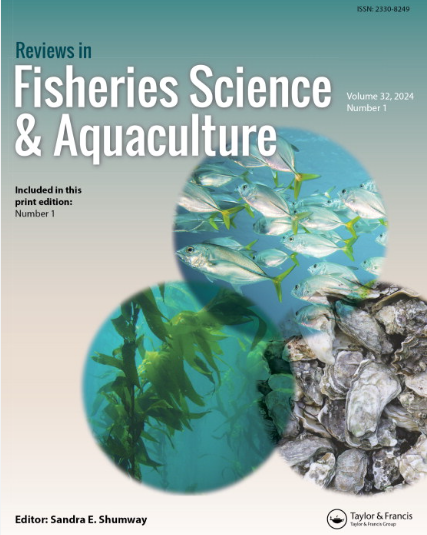南美新热带鱼冷冻精液活力的Meta分析
IF 6.4
1区 农林科学
Q1 FISHERIES
引用次数: 2
摘要
摘要采用系统综述和荟萃分析(MA),以运动率为指标,总结了南美淡水鱼精子冷冻保存效果的科学证据。该搜索策略应用于四个电子数据库,纳入标准是对新热带鱼进行的研究,包括提交冷冻保存的精液。根据新鲜(对照)精液和冷冻保存(处理)精液的一般平均值,对每个指标进行随机影响的荟萃分析。MA共收录了25篇报告26项研究和116项试验的出版物。所有变量的研究之间都存在异质性。总的来说,冷冻保存的精液表现出较低的晚期活力,并观察到其增加(P < 0.01)以更大比例的精液稀释。结果表明,使用醇和酰胺等冷冻保护剂进行冷冻保存似乎有利于新热带南美淡水物种冷冻保存精液的运动率。本文章由计算机程序翻译,如有差异,请以英文原文为准。
Cryopreserved Semen Motility of South American Neotropical Fish: A Meta-Analysis
Abstract Systematic review and meta-analysis (MA) were performed to summarize scientific evidence of the effects of cryopreservation of sperm from South American species of freshwater fish using the motility rate as an indicator. The search strategy was applied to four electronic databases, and the inclusion criteria were studies conducted on neotropical fish, including semen, that were submitted to cryopreservation. Meta-analysis for random effects was performed for each indicator according to the general average of fresh (control) and cryopreserved (treated) semen. A total of 25 publications reporting 26 studies and 116 trials were included in the MA. Heterogeneity was observed between studies for all variables. In general, cryopreserved semen showed lower advanced motility, an increase of which was observed (P < 0.01) in a greater proportion of semen dilution. Results showed that cryopreservation with the use of cryoprotectants such as alcohols and amides seem to favor the motility rates of the cryopreserved semen of neotropical South American freshwater species.
求助全文
通过发布文献求助,成功后即可免费获取论文全文。
去求助
来源期刊

Reviews in Fisheries Science & Aquaculture
FISHERIES-
CiteScore
25.20
自引率
0.90%
发文量
19
期刊介绍:
Reviews in Fisheries Science & Aquaculture provides an important forum for the publication of up-to-date reviews covering a broad range of subject areas including management, aquaculture, taxonomy, behavior, stock identification, genetics, nutrition, and physiology. Issues concerning finfish and aquatic invertebrates prized for their economic or recreational importance, their value as indicators of environmental health, or their natural beauty are addressed. An important resource that keeps you apprised of the latest changes in the field, each issue of Reviews in Fisheries Science & Aquaculture presents useful information to fisheries and aquaculture scientists in academia, state and federal natural resources agencies, and the private sector.
 求助内容:
求助内容: 应助结果提醒方式:
应助结果提醒方式:


